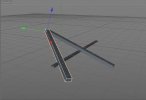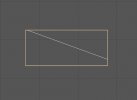- Joined
- Aug 12, 2010
- Messages
- 643

Basic Diamond (3)Stone Set [6" x ¾"]
Basic Diamond Set is used for sharpening knives on Edge Pro compatible knife sharpeners. Diamonds offer excellent performance in sharpening knives of any steel including high carbon, vanadium, and chromium steels. Diamond-bearing plates are mounted on the high-quality aluminum blank with laser...
Anybody have any experience with these? Very inexpensive. Made in China.
Are they fairly decent? Durable?
Thanks for any info!





